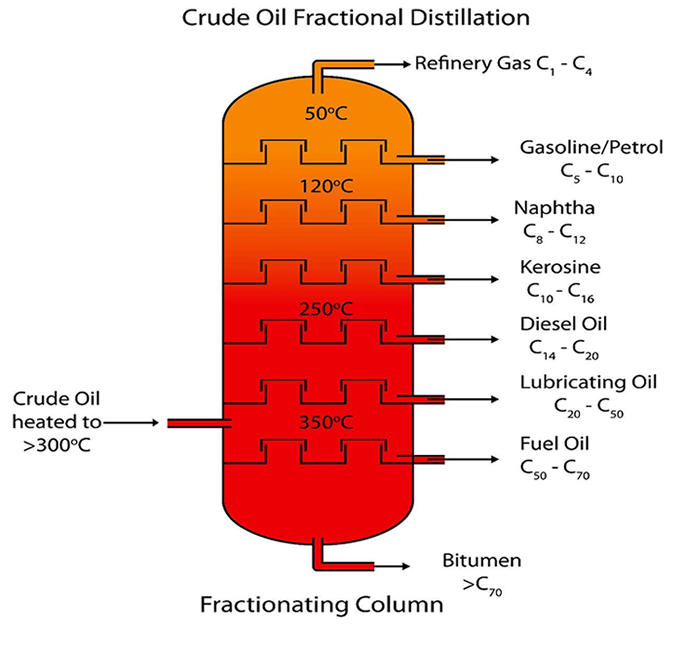Abstract
The refining of lubricating oils from waste lubricating oil was examined utilizing a novel blend of solvent extraction and activated alumina adsorbent. The activity of these solvent extraction blends {toluene, butanol and methanol (A)}, {toluene, butanol and ethanol (B)} and {toluene, butanol and isopropanol (C)} was evaluated experimentally, oil to solvent proportions from 1:1 to 1:3 were analyzed for mixture blend (C). The results confirm solvent mixture (A) gave good efficiency with the highest percent sludge removal. The maximum percent of sludge removal improves with the increase of solvent to oil ratios. The physical properties of the recycle oil were measured. The results show the change in the properties of recycling oil and have good efficiency.
Re-recycling used lube oil Solvent extractionAdsorption
- Introduction
The most important petroleum fraction is Lubricating oil that is used in almost all vehicles and machines. Lube oils are used to decrease rubbing between surfaces in moving parts. After oxidation, most impurities are generated in base oil, during its application in an internal combustion engine. This contamination contains unsaturation, phenolic compound, aldehyde, an acidic compound, additive, metals, varnish, gums and other asphaltic compounds originating from the overlay of bearing surfaces and degradation of the base oil components [1]. In spite of impurities, most of the base oil part in the waste oil is not exhausted. The chemical composition of the lubricating oil is usually preserved to a large amount because of the high stability of the heavy compounds contain in the base oil [2]. Used lubricating oils which difficult to handle anthropogenic pollutants due to its toxicity and become undesirable for use. Its transfer strategies of the past, for example, arrive filling, street oiling, dump on the ground diminishes soil efficiency and makes the plants developed on the dirt to be unsatisfactory for food and forage. The recycling of waste oil may be an appropriate and cheap alternative to and burn incineration [3]. Different recycling techniques have been proposed for refining of used lubricating oils. During refining, the chemical, physical and mechanical impurities are removed with the following processes: distillation, acidic refining, clay treatment, and hydrogenation. Theses processes give different yields and products. Solvent extraction followed by adsorption is a more effective processes for recycling waste lubricating oils. It is aimed at conserving natural resources and recovering (rather than destroying) the lubricating oil. This is a most attractive cleaner technology. The solvent selected should have a maximum solubility for base oil and minimum for additives carbonaceous. The solvent is then recovered by distillation for recycle reason [3]. The key commitment of this examination is to diminish the percent oil misfortunes utilizing suitable solvent extraction. Different parameters i.e. the proportion of solvent to oil, extraction condition and kind of solvents are also studied.
2.Experimental
2.1. Material
Used lubricating oil was obtained and collected from EPRI (Egyptian petroleum institute) oil service station. All reagents (purchased from Merck Co., Aldrich, and Fluka chemical Co.) (Toluene, 1-butanol, ethanol, methanol, isopropanol, and alumina).
2.2. Procedure
The used oil is subjecting filtration before to treatment. This was done using a funnel with a filter paper placed in it, and then a vacuum pump was connected to the filtering flask to which the funnel was fixed with the aid of a rubber stopper. 100 ml of used lubricating oil was mixed with a blend comprised of 100 ml of toluene, 100 ml of 1-butanol and 100 ml of methanol in a closed vessel. The whole mixture in a beaker was placed on a magnetic stirrer and stirred for one hour. Then it was allowed to stand for 24 h. The clear surface oily layer containing solvents and oil was transferred to a rotary evaporator in order to separate the solvents from the regenerated lubricating oil. The separated base oil was then mixed with activated alumina at a proportion of 1:5 alumina. The alumina was added to remove the dark color. The same method was employed in the Toluene, 1-butanol, and ethanol and also with Toluene, 1-butanol and isopropanol. The same method was working in the Toluene, 1-butanol, and isopropanol by solvent to oil ratio 1:2 and 1:3
3.Results and discussion
Waste oil is a blend of combustion product such as water, fuel, road dust, wear metal and oxidation product which form complex and corrosive organic acids. The latent heat of vaporization is the amount of Vander Waals forces that hold liquid molecules together. An important experimental measurement of the solvent extraction re-refining process is normally represented by the amount of sludge removed from the used oil. This may be expressed as the percent sludge removal (PSR) which is the mass of sludge removed in gram/100g of used oil.
The experimental results indicate that the more effective for sludge removal capability of solvent mixtures A, B and C as shown in Table 1, Table 2 It is found that mixture A removed maximum sludge percent (52%) followed by mixture B (36.7%) and mixture C removed lower percent (18.9%). these attribute to the solubility of the base stock oil in these solvent and their dielectric constant as shown in Table 3. The raffinate percent decrease from solvent mixture A followed by solvent mixtures B and C as given in Table 1, Table 2. The raffinate produced from solvent mixture A is yellow in color because of it free from sludge as shown in Table 1, Table 2.

